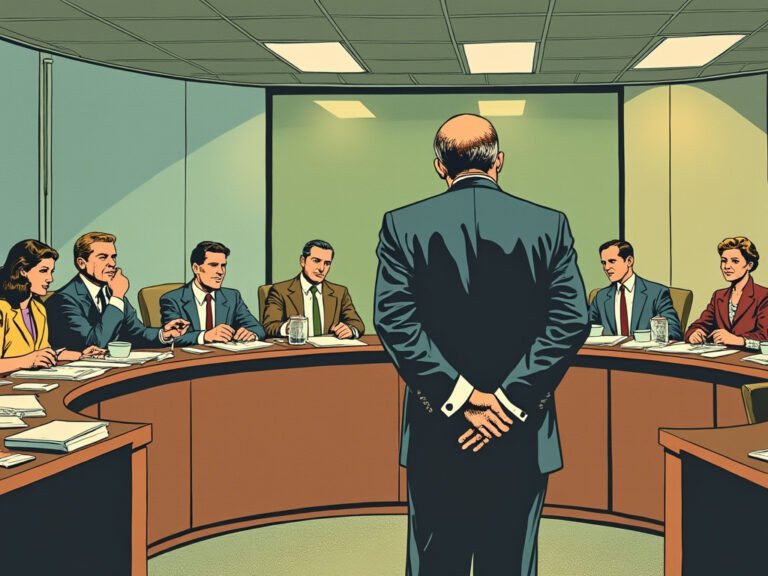“The human body is the best picture of the human soul.”
Ludwig Wittgenstein, the Austrian-British philosopher, might not have been talking about office posture when he said this, but boy, does it apply. Your body doesn’t just carry your brain to meetings; it’s broadcasting your inner state louder than the office gossip after happy hour.
Sit up straight.
Your spine will thank you, even if your comfort zone won’t. Leaders never slouch.
Listen up, new leader. Your chair isn’t a hammock, and your desk isn’t a pillow. When you sit up straight, you’re not just aligning your vertebrae; you’re aligning yourself with success. It’s like you’re telling gravity, “Nice try, but you can’t keep a good manager down.”
Think of your spine as your personal powerline. When it’s straight, the energy flows freely. When it’s curved like a question mark, the only question is, “Why does this person look like they’re melting?” Slouching doesn’t say “I’m relaxed and approachable.” It says “I’m one step away from sliding under this desk and taking a nap.”
But here’s the kicker: sitting up straight isn’t just about looking good. It’s about feeling good and thinking clearly. When you slouch, you’re compressing your lungs, which means less oxygen to your brain. And let’s face it, in some of those long meetings, you need all the brain oxygen you can get.
Now, I’m not saying you need to sit like you’ve swallowed a broomstick. We’re aiming for “attentive leader,” not “robot in need of WD-40.” Find a comfortable, upright position that you can maintain. Imagine there’s a string pulling you up from the crown of your head. It’s like you’re a puppet, but you’re the puppeteer. Just don’t start making marionette movements in the middle of a board meeting.
And here’s a secret: good posture isn’t just about your back. Engage your core (yes, those abs you’ve been meaning to work on), keep your shoulders back and down, and plant your feet firmly on the floor. It’s like yoga, minus the awkward stretchy pants and “om” chanting.
Remember, when you sit up straight, you’re not just improving your posture; you’re elevating your presence. You’re saying, “I’m here, I’m engaged, and I definitely didn’t doze off during that last PowerPoint slide.”
Here’s a Pro Tip:
Stick a Post-it note on your computer screen with a simple “|” drawn on it. It’s a reminder to keep your spine aligned like that vertical line. If you start to slouch, the line will look crooked. It’s like a low-tech posture alarm. Just don’t draw the line on your actual screen with a permanent marker. Trust me, IT doesn’t appreciate that kind of “hardware optimization.”
So, new manager, sit up straight and take charge. Your spine, your team, and your future chiropractor will thank you. Who knows? With perfect posture, you might even grow an inch. Vertical progress is still progress, right?



